
Free Weights vs. Machines
Key Takeaways
- When it comes down to using free weights vs machines, both have their benefits and uses.
- A single gym session can use various types of equipment to perform isolation and compound exercises for an effective workout
- Proper form and technique is required with free weights, while beginners and people rehabbing from injury may look to machines to get their work out in.
- Depending on your goals, preferences, and limitations, both free weights and machines can be used.
Gym life is important and essential to every fitness-minded person. There’s nothing better than putting in a solid workout to really get you centered and focused on your goals, but what type of gym equipment should you go for?
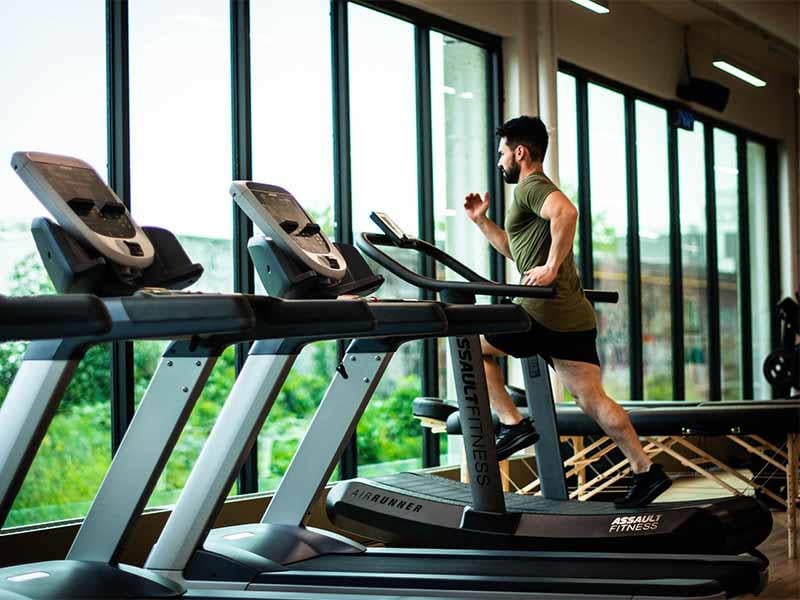
When you walk in the gym, do you have a set routine that uses free weights and/or machines?
Or, do you walk in and wonder what type of equipment you should be using to meet your goals?
Does it matter if you use free weights, body weight, or machines? Turns out, there are reasons to choose one over the other.
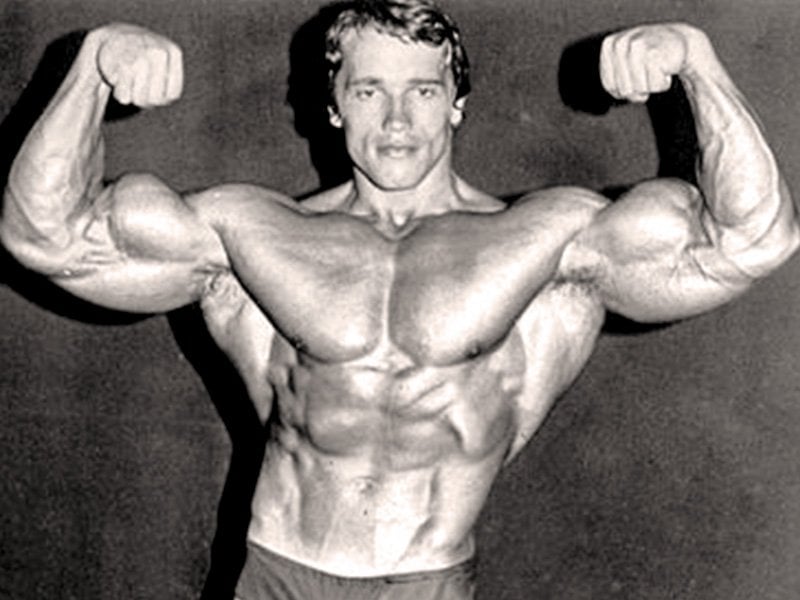
Golden Era great Arnold Schwarzenegger was a great example of using both free weights and machines. He would run the rack with free weights to focus on one muscle group, then hit the machines to work another.
Today, we discuss using free weights vs machines, and when one might work better than the other.
First, let’s differentiate the two. Then, we’ll go over specific gym goals and which type of equipment would work better to meet them.
What are Free Weights?
Dictionary.com defines a free weight as “a weight used for weightlifting whose motion is not constrained by external apparatus.”

Most athletes use free weights to train for sports, and strength training is essential for:
- Bodybuilding
- Weightlifting
- Powerlifting
- Strongman
Free weights are either picked up in hand or attached to a barbell.
The force of gravity opposes the force of the muscle through contractions (concentric and eccentric) to build strength and mass.
Examples of free weights include:
- Barbell (weighted bar) with weight plates
- Dumbbell
- Kettlebells
- Medicine ball
- Sandbags
- Weighted bands/cuffs (for ankles and wrists)
What are Machines?
Exercise machines are defined as “a machine or device used for physical exercise or training.”
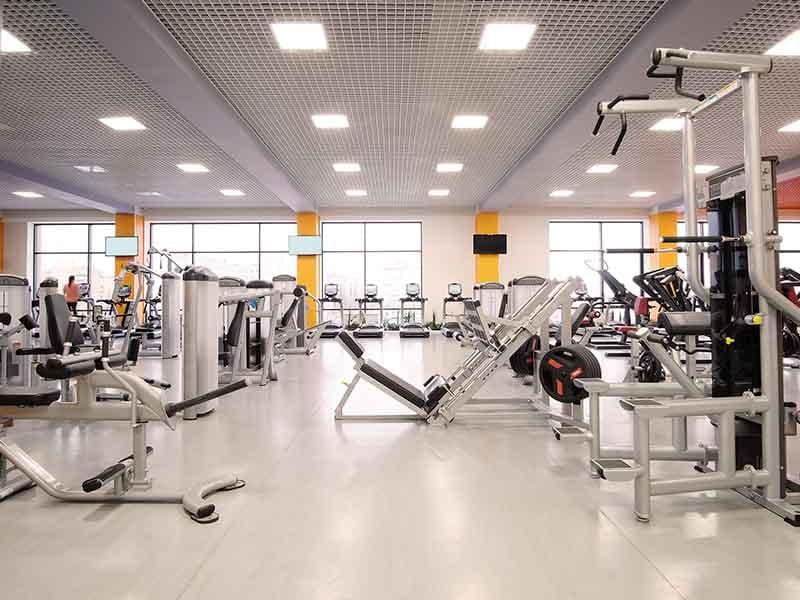
When considering exercise or gym equipment, machines include:
- Treadmill
- Elliptical
- Cable machine
- Pulley machine
- Nautilus machine
- Smith machine
- Leg extension
- Multi-use machine
These machines are designed to either focus on one specific muscle group or multiple depending on the machine. For example, a Nautilus machine is designed as a full-body workout machine, free weights not needed.
Now that we’ve defined each type of workout equipment, let’s take a look at different scenarios for the best equipment choice.
Are You a Seasoned Bodybuilder or Just Starting Out?
Your skill level in the gym can determine whether to choose free weights vs machines.
If you are a seasoned bodybuilder, then you likely use free weights more than machines. Or, you might use a combination of the two to meet your lifting goals.
But what if you are a beginner just starting out? Is one preferable to the other?

For those just getting comfortable with lifting weights, then starting with machines is going to be the better option.
There are a couple of reasons why:
1. Less skill involved
Almost all machines will have stickers that instruct you on how to use them properly and what muscle groups they use. This not only helps with proper form, but it also ensures you are using the equipment properly to avoid injury.
2. Getting used to using muscle groups
You can get used to the proper movements needed for each muscle group, and what weight limits work best for you.
If you find that you choose a weight that’s too heavy, the machine will help guide you back to the starting position safely.
Even if you suddenly let go of the handles, the machine is designed to take the weight off the user, avoiding injury.
3. No spotter needed
With machines, you won’t have to worry about having a spotter. You can take your time using the machine, getting used to the range of motion, and figuring out what works for you.
Once you get used to the machines, you can move to free weights. But it’s always advisable as a new lifter to start out with machines, especially if you don’t have a spotter.
Are You Recovering from Injury?
Regardless if you are a seasoned lifter or just starting out, recovering from an injury requires reconditioning. In this instance, choosing between free weights vs machines, the machines might be a better choice.
Machines are able to isolate single muscle groups far better than free weights can. When it comes to rehabilitating an injury, using a machine can be preferable.

For example, say you’ve had a knee injury or surgery and need to work the quad in that leg. Your physical therapist will likely have you use a leg extension machine before you’re ready to tackle free weights.
Now, that doesn’t mean a therapist will always use machines for rehabilitation.
In fact, some may decide bodyweight only or free weights might be advisable. It truly comes down to the type of injury and goals for rehabilitation.
Strength Training and Overall Power
When it comes to increasing power or building strength, which do you think is better? Comparing free weights vs machines, free weights definitely win in this category.
Any powerlifter or bodybuilding competitor will tell you that free weights reign over machines. The explosive nature of deadlifting competitions requires a power that just can’t be found in a weight machine.
Athletes also prefer free weights for similar reasons. The stability and skill required to lift heavy weights lend itself directly to:
- Jumping
- Running
- Tackling
- Blocking
When trying to improve jump performance, 100 men were divided between two groups and studied over eight weeks. Half performed the parallel barbell squat while the other did leg presses twice a week.
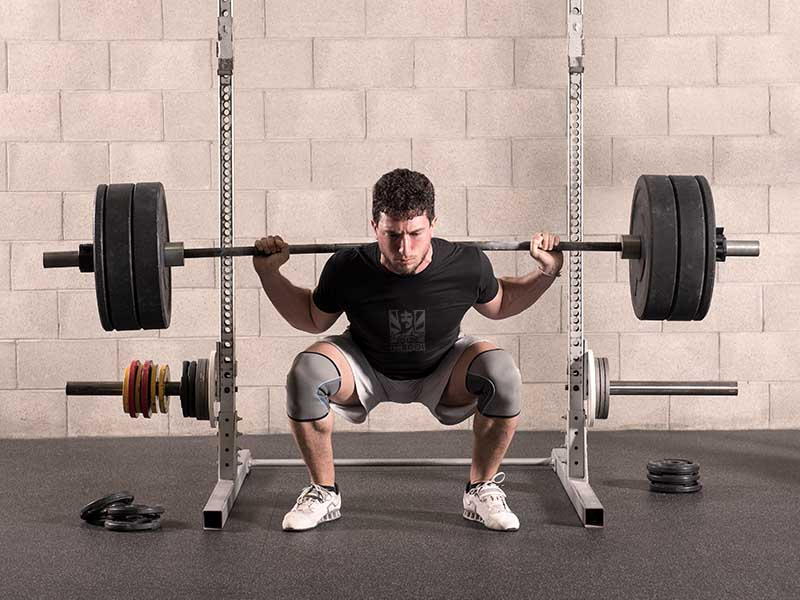
Each exercise offered a different benefit to their respective group:
- The barbell squat group were able to significantly increase their squat jump and countermovement jump.
- The leg press group were able to significantly increase their 1-repetition-maximum
Improving strength and power are also essential to the natural movements of our bodies: pushing, pulling, and lifting.
What about Isolation and Compound Exercises?
When comparing using free weights vs machines for these types of exercises, each has its benefits.
An isolation exercise works for just one muscle group. For example, the leg extension machine focuses on the quadriceps. If you want to perfect your bicep curl for killer biceps, the dumbbell is the best for the job.
Isolation exercises are superior when wanting to work a specific muscle to failure. Let’s say your back makes you call it quits while performing your squats, and you still want to work your glutes.

You can perform some isolation exercises to work them to proper exhaustion. A compound exercise works multiple muscle groups at once using two or more joints.
If you’re working on your weighted squat, then you’ll use either a barbell or dumbbells. The weighted squat works your entire lower body and core at once.
Most weight lifters with start with compound exercises and then use isolation exercises to target weaker muscles. The specific type of exercise will determine if free weights or a machine will be used.
One Size Fits All?
If you are looking for a one size fits all approach, then there is definitely an advantage to free weights over machines.
The main reason that free weights win in this category is that everyone’s body dimensions are different. Some people have longer limbs and/or torsos. Others have different size muscles and joints.

Sure, there are seat adjustments and lever positions changes available on machines. But some just can’t adapt to everyone’s various body sizes.
If your body isn’t properly aligned in the machine, it could cause muscle or joint injury.
If you find that you’re limited in using machines, for this reason, it’s best to stick with free weights. Just make sure you work with a spotter and focus on proper form before lifting heavy to prevent injury.
Which is Best for Muscle Mass and Hormone Levels?
When it comes to building muscle mass, do you think you know which is better, free weights or machines? The answer may surprise you.
It turns out, there isn’t much of a difference whether you use free weights vs machines, according to this scholarly article.

During an eight week study following 15 men and 21 women, they were tested using both types of equipment. Some of the men used free weights during the study period while the rest used machines.
Muscle mass, thickness, and strength were tested both before and after the study. Before, during, and after each workout, testosterone and cortisol levels were tested as well.
The results indicated that there was not a significant difference between the men in each group. The only real difference was that testosterone levels in men in the free weights group were higher during training sessions.
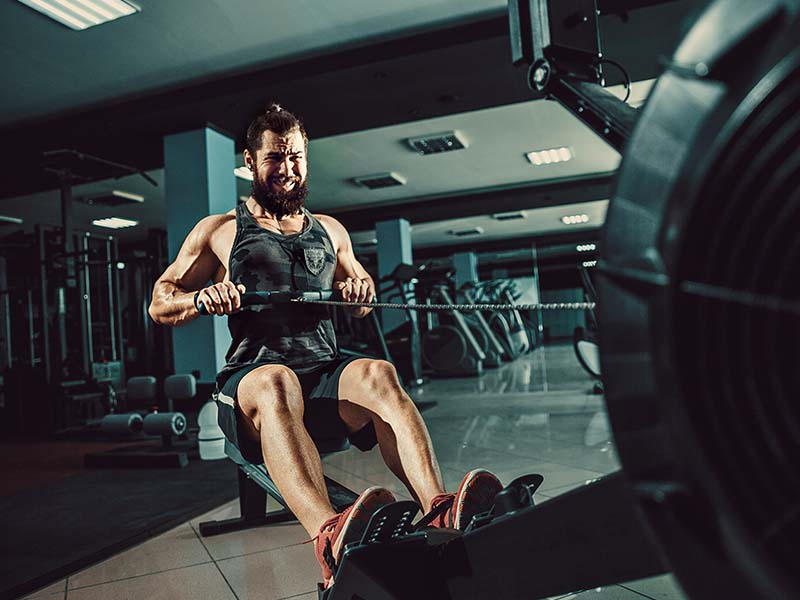
Similarly, this study on 10 resistance-trained men showed elevated hormone responses during free weight exercises.
So, when it comes to building muscle mass, free weights and machines work basically the same. When it comes to hormone levels, free weights beat out machines.
The Great Weight Debate
When it comes to comparing free weights vs machines and the amount of weight you can put up there’s a winner. For sure, machines let you put up more weight and lift heavier than free weights.
It’s true that you have a greater range of motion with free weights. But the limited range of motion using machines is what allows you to lift heavier.
Consider this study which measured 31 males 1RM capabilities using free weights vs machines. They performed three of each type of exercise and each showed significantly greater weight ability using machines.

This means we need to offer a word of caution. If you transition from machines to free weights, remember that you need to adjust your weight accordingly.
Start with at least 50% less weight using the same free weight type exercise, at least for the first rep. If it’s too light, then you can add some more weight to get to the best starting weight.
Trying to be tough and lift the same weight using free weights as a machine will almost certainly result in injury.
Better to start out slow and increase then to start out heavy and tear a muscle, derailing your goals.
What about Weight Loss?
While we’re on the subject of weight, do free weights or machines have an advantage to help you lose weight?
Turns out, you can burn more calories using machines in place of free weights. So if weight loss is a concern, focus on machines until you reach your ideal number.

According to this list from Harvard Medical School, here are the calories a 185 lb man can burn in 30 minutes:
- General weight lifting = 133 calories
- Vigorous weight lifting = 266 calories
- Moderate stationary bicycling or rowing = 311 calories
- General elliptical exercise = 400 calories
- Vigorous stationary bicycling = 466 calories
As you can see, the same 30 minutes of exercise burns a significant amount more calories using machines. The speed and intensity used can really amplify the calories burned, regardless of equipment.
Do You Prefer to Work Out Alone?
Some people thrive on working with a trainer or as part of a team. Others would much rather put in their headphones, crank their favorite jams, and get to work.
Neither is right or wrong, it all comes down to personal preference. And depending on the types of workouts and goals, you might choose free weights over machines.

If you are lifting heavy free weights, consider having a spotter. They can help keep you from injury, make suggestions on proper form, and help you be able to lift heavier.
If you prefer to work out alone, then machines might be the way to go. Here are some reasons why:
- There is very little risk of injury
- The machine guides you through proper form
- It also includes an instruction guide right on the machine, as well as what muscle groups are targeted
If you are pressed for time, then you can do a quick circuit using the machines to get a great full-body workout. Using free weights usually takes more time, having to change out weight plates and reset for each exercise.

Of course, you can also consider bodyweight exercises as well. You do need a proper form and to know how to do the exercises correctly to avoid injury and work the muscles properly.
When it comes down to free weights vs machines vs bodyweight exercises, there is a benefit to all three. You can do them all in just one gym session if you have time and the knowledge to perform each exercise correctly.
One of the best things about bodyweight exercises for loners is that they can be performed at home without equipment. Free weights are also less expensive to acquire, so they can be done at home as well with the right set up.
Is Cost a Concern?
For some, the debate between free weights vs machines could come down to cost.
Sure, there are some gym memberships that are cheap, but others can be pretty expensive. And the cheaper gyms aren’t everywhere, so you might not have one that’s convenient for you.
If you just can’t fathom walking into a gym and working out in front of a bunch of strangers, a home gym might be your answer. If this is the case, then you’ll likely want to turn to free weights.
They’re less expensive and don’t take up as much space as machines do.

Now, we’ve talked a lot about proper form and doing the exercises correctly. We only recommend this for those who at least know the basics of form and function of exercises.
If you haven’t already, check out our videos section. Not only can you learn about bodybuilding and watch the pros workout, but you can also learn the proper technique.
Study videos and how-tos before you commit to a home gym workout.
And if you’re just starting out, ask a friend to work out with you or at least hang around while you do. A spotter can mean avoiding injury, especially when using a barbell and bench to work out.
Creating Your Own Home Bodyweight Workout
If you choose to work out at home, you can even do bodyweight exercises without any equipment. You also need minimal space, which is great for those who don’t have much to spare.

You can create your own circuit workout like this one below:
- Plank: 30 seconds
- Glute bridges: 12 – 15 reps
- Lunges: 10 – 12 reps
- Squats: 10 – 12 reps
- Push-ups: 10 – 12 reps
- Lying leg raises: 12 – 15 reps
Do each set of reps for a total of three rounds. Try not to take any more than a 60-second break between sets of each exercise.
You can add reps or sets to increase the challenge, and change up the exercises. Once you’ve mastered bodyweight exercises, you’ll have to start lifting weights if building muscles is your goal.
But, this is a great way for you to get started if cost is a concern. Plus, it’ll help you build confidence while also practicing proper form to get you gym-ready.
This Will Help
Whether you go for free weights or machines, we definitely recommend our 3-in-1 Recovery & Muscle-Building powerhouse Vintage Build™. It contains L-Glutamine, BCAAs, Creatine Monohydrate, and other key nutrients that promote hypertrophy and preserve lean mass.

And of course to fuel your workout, look no further than our Two-Stage Pre-Workout Vintage Blast™, an award-winning energy formula that comes in 3 delicious flavors. No crash, no jitters, keeps you going.
The Bottom Line
Are free weights better than machines? Not always. Each type of weight lifting equipment has its benefits. And there are pros and cons to using free weights vs machines.
When it comes to free weights vs machines, there isn’t a clear winner. What works best is determined by the individual and their:
- Goals
- Preferences
- Limitations
Most people will use both free weights and machines during their time in the gym, sometimes on the same day. One thing we saw time and again in this battle of free weights vs machines: your end goal makes a difference.
Finding a gym (or creating a home gym) with both types of equipment offers you the best of both worlds.
Do you prefer free weights or machines? Or do you use both? Let us know in the comments.











